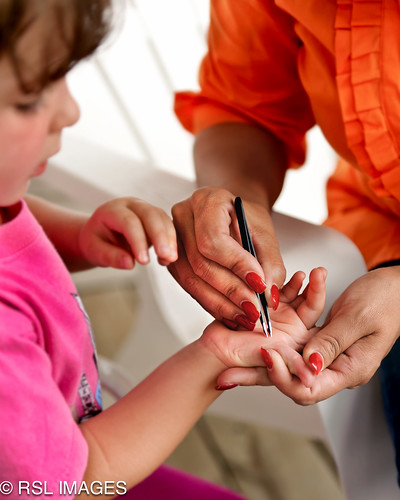One of the worst parts of being a parent is delivering bitter medicine to a child. When one of my sons had an eye infection for example, I had to administer eye drops a couple of times a day. This can be very traumatic for a small child (so much so, that I clearly remember my own squirmish panic when my mother would treat my eye infections in my youth.) And now it is my son’s turn to wriggle and scream and hate every second of the procedure. But I administer the drops anyway, because I know that they will help in the long run.
This is called a “necessary evil”–doing something that is harmful or unpleasant because it serves a greater good, and we do them all the time. Imagine the doctor who resets a broken bone or delivers a painful injection, the social worker who removes a screaming child from the custody of their parents, the police officer who evicts someone out of their home, or the manager who fires an underperforming employee. We all have occasions where in order to do our jobs well, or to serve society well, we may need to deliver harm to others.
These are difficult moments. When I see my son frightened and crying and struggling to escape the dreaded eye-dropper, it breaks my heart. Most of us strive to be good and we don’t want to be bearers of evil, necessary or otherwise.
The problem with necessary evils is that they are, by definition, unavoidable. Like it or not, we are called upon to perform them in our quest for a greater good. So the question becomes, how do we handle those moments?
Two researchers, Joshua Margolis and Andrew Molinsky, recently did a qualitative study of managers, doctors, police officers and addiction counselors to evaluate how they handled the subjective experience of these highly sensitive interpersonal encounters. Broadly, there seem to be two different approaches to necessary evils:
1. Disengagement. Most of the research to date has focused on the tendency to disengage when causing harm to others as a means of diffusing the intense emotional experience of the harmer. Strategies might include depersonalizing the victim, ignoring or distorting the consequences of one’s actions, or reconstruing one’s actions in a way that makes them appear more morally justifiable. One can imagine the SS soldiers of Nazi Germany using disengagement strategies to detach from the emotional consequences of the brutal treatment of their Jewish captives.
Disengagement strategies protect the person who is doing harm from feeling the consequences of their action but they also engender less sensitivity and compassion for their victim.
2. Engagement. Although most of the research to date seems to focus on disengagement strategies, Margolis and Molinsky also evaluated their subjects for more engaging strategies.
Engagement strategies include allowing oneself to feel the emotions of the victim (e.g. sadness for a terminated employee or an evicted tenant,) tuning in to the victim’s experience (i.e. really seeing the reactions and repercussions of one’s actions,) or tapping into one’s own humanity (e.g. a police officer performing evictions who said, “you wouldn’t be human if you didn’t feel bad.”)
These strategies help the “evil-doer” to feel more compassion and empathy towards the affected party.
The benefit of disengagement strategies is that they protect us from painful or harmful feelings and emotions. Some argue that healing professionals can suffer from “compassion fatigue” if they don’t disconnect from their patients in some way.
But there is something about the engagement strategies that is more human and takes some of the sting away from the necessary evil.
 RSL IMAGES via Compfight
RSL IMAGES via Compfight
Tonight, I had to remove a splinter from my son’s hand. When I began to explain what I was about to do, he immediately started to cry and wanted to wriggle away. I took my time, and showed him what I was going to do.
I showed him the pin I was going to use, let him touch it, and began gently picking at the skin, first on my own hand, and then on his hand (but not near the splinter.) My son experienced some pain, but he was able to remain calm and allowed me to remove the splinter.
What could have been a moment of sheer terror became a moment of connection and compassion for me and a rite of courage for my son.
How do you handle necessary evils?
—
References and recommended reading:
Margolis, J. D. & Molinsky, A. (2008). Navigating the bind of necessary evils: Psychological engagement and the production of interpersonally sensitive behavior. Academy of Management Journal, 51, (5), 847–872.


Great blog, Robert.
When my son, Sean was a tadpole, and I had to inflict pain, I handed him a magic wand. It didn’t matter it was a neon yellow fly swatter. It worked. When he held it, he said he knew had more power than usual. Fortified, he withstood more pain THINKING he could. When he was a bit older, he would ask for it as well as his Snoopy.
Before I needed to inflict pain on him, I would have him touch Snoopy the way I would need to touch him. Snoopy took a lot. And Sean learned to as well.
Sean was followed by the whole pediatric endocrinology team in Madison WI, Children’s Hospital for 14 years, ages 4-18. He had every horrible test in the book. One day when he was 5 and our appointment was delayed, we sat in the waiting room. Calmly he pulled on my sleeve, “Mom, I am so lucky.” I asked why. He said, “Look at all these kids here with me waiting for their appointments. Some have no ears, no hair, no arms, no legs or their skin is burned off…And all I have is ‘short!'”.
Wisdom and gratitude at age 5. He made his Mom so proud!
Judy, I’m taking notes on these ideas. I wish I had thought of Snoopy with the splinter operation. Great idea! Sounds like Sean is a chip off the block!
Hey, Jeremy, and forgive me for writing Robert above. Dah!
Sean IS a cool young man and loving, too. Thanks for. your kind comments.
I feel for you and your son, Hope he is AOK now.
Glad these ideas were helpful to you.
And Snoopy IS very brave and loving, too!
Great tips and insights. Like you, I try to explain and be as calm as I can. I find that often the anguish and anxiety of the parent can transmit to the child – even when unwarranted. When I explain to my kids that something might hurt, but it will make things better in the long term, it helps both them and me. Over time, they have come to trust me – the proof is in the pudding, as they say.
I think this extrapolates well to the adult world as well. Adults like to have context. They like to know what pain points are coming up,and how to minimize them or, if that’s not possible, what the long-term good is. Short-term pain for long-term gain.
Quite probably, we don’t spend enough time giving context and letting adults make decisions about how they will respond to this pain.
Great comments and idea, Lisa.
I just remembered, I used to sing to Sean. Sometimes he sang, too. Even though he knew the pain was coming I would sing Tur-a-lura-lura or even Old MacDonald had a farm….The diversion helped him cope.
Sometimes if he had to go a really painful procedure, I would tell him ahead I was going to clap. The noise helped him diffuse his attention away from his body. Context IS an amazing concept. Flexibility and openness to shift attention though with being mindful to set the stage in a more adaptive manner.
To this day when I am at a doctor getting a painful procedure, I will ask someone to talk to distract me from focus me away from the ‘hurt zone’..I think of AI and smile,